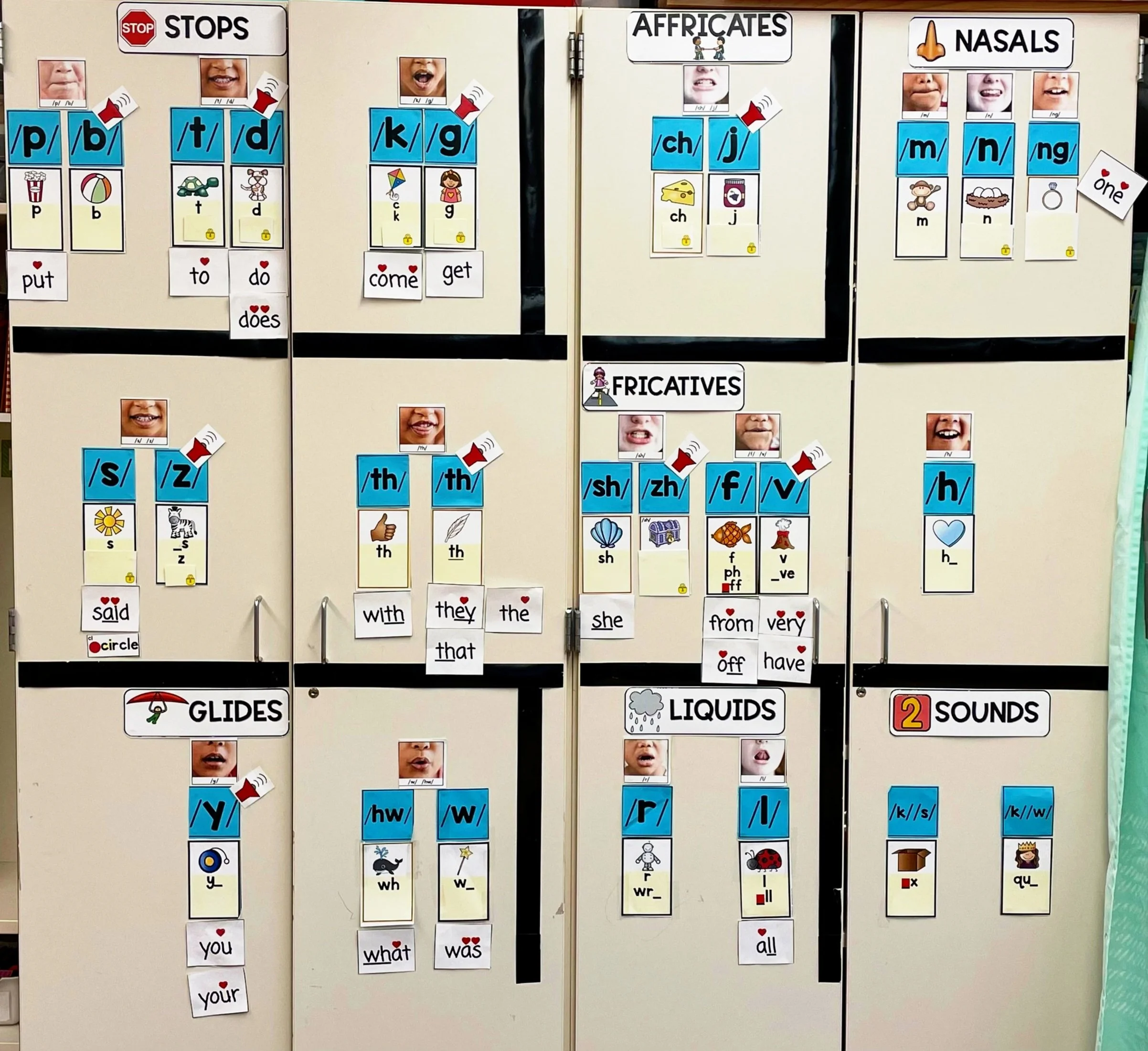Phonological awareness
Phonological awareness speaks to sound structures (words, syllables, rhymes and sounds <phonemes>). Both phonemic awareness (word level - segmenting, blending or manipulating individual sounds in words) and phonics (sound and letter relationships) are components of phonological awareness. Phonological awareness is necessary in order to use phonics knowledge when reading (decoding) and writing (encoding). The goal of phonics instruction is to help children acquire and use the alphabetic principle.
Ending the “Reading Wars”
In recent years, the need for consistent, explicit phonological awareness instruction has been at the forefront of the “reading wars” debate. Dating back over 200 years, experts have gone back and forth about how reading should be taught (e.g. phonics-based approach vs. whole language). I find this debate to be summarized beautifully in the comprehensive tutorial review of the science of learning to read, “Ending the Reading Wars: Reading Acquisition From Novice to Expert,” Castles, A., Rastle, K., & Nation, K. (2018). Ending the Reading Wars: Reading Acquisition From Novice to Expert. Psychological Science in the Public Interest, 19(1), 5–51.
The limitations the authors speak to lead to what I see as a thoughtful way to move forward in literacy instruction:
“…although there have been many reviews describing the strength of the evidence for phonics instruction (e.g., Rose, 2006), it is more difficult to find an accessible tutorial review explaining why phonics works.”
“…there has not been a full presentation of evidence in a public forum about reading instruction that goes beyond the use of phonics.”
So how do we end the “war” and move forward? I think we have to carve time for both daily, explicit phonological awareness instruction (phonemic awareness / phonics depending on students’ needs) and teaching children how to transfer and apply this instruction within their writing and reading of rich, relevant, high-interest materials during reading and writing workshops. In others words, it isn’t about one side or the other…it’s both being well taught in classrooms with ongoing, supportive professional development for educators. A literacy program/curricula is only as good as the educators that adapt and modify it to meet the needs of their students.
Dr. Scarborough’s Reading Rope
“The Reading Rope consists of lower and upper strands. The word-recognition strands (phonological awareness, decoding, and sight recognition of familiar words) work together as the reader becomes accurate, fluent, and increasingly automatic with repetition and practice. Concurrently, the language-comprehension strands (background knowledge, vocabulary, language structures, verbal reasoning, and literacy knowledge) reinforce one another and then weave together with the word-recognition strands to produce a skilled reader. This does not happen overnight; it requires instruction and practice over time.” (International Dyslexia Association - IDA)
Joan Sedita’s Writing Rope
Joan Sedita suggests “a model that identifies the multiple components that are necessary for skilled writing. In 2001, Scarborough published a graphic that depicts multiple components of language comprehension (i.e., background knowledge, vocabulary, language structures, verbal reasoning, literacy knowledge) and word recognition (i.e., phonological awareness, decoding, sight recognition) as strands in a rope. As students develop skills in these components they become increasingly strategic and automatic in their application, leading to fluent reading comprehension. A similar “rope” metaphor can be used to depict the many strands that contribute to fluent, skilled writing, as shown in the graphic. It should be noted that instruction for many skills that support writing also support reading comprehension.” (International Dyslexia Association - IDA)
vocabulary development beyond phonological awareness
Vocabulary development is also a critical aspect of reading comprehension and “once children can read, reading provides the major substrate for vocabulary growth (Nagy & Herman, 1984), but variations in word learning might be driven more by factors associated with vocabulary learning itself, rather than reading comprehension.”
Vocabulary development is more than just the number of individual words known. It is about how well they are known and how flexibly they are used within a variety of contexts.
“Beyond single words, text comprehension demands knowledge of:
multiword utterances (e.g., the meaning of the phrase ‘by the way’
idioms (e.g., ‘kick the bucket,’ ‘break the ice’)
figurative expressions that occur frequently in text
Poor comprehenders show reduced knowledge of idioms and figurative expressions (Cain & Towse, 2008; Nation, Clarke, Marshall, & Durand, 2004), as do some children who are reading in their nonnative language (Murphy, 2018; S. A. Smith & Murphy, 2015). For second-language learners, reading comprehension processes are not deficient in themselves, but limitations in reading comprehension might follow from differences in knowledge relative to children whose first language is the majority language.”
transitioning from word walls to sound walls
Which is better? Word walls (grouping words by initial letters) or sound walls (grouping words by sounds)? I think that can be answered by considering which tool will support children in matching speech to print best. Louisa Cook Moats explains that, “without awareness of the speech sounds that letters represent, one cannot match letters to sounds and read unfamiliar words.” (Speech to Print: Language Essentials for Teachers)
So…sound walls for the win. I love the way Delilah Orpi provides benefits, graphics and processes for setting up sound walls in, “How To Switch To and Use A Sound Wall In The Classroom” (2020).




